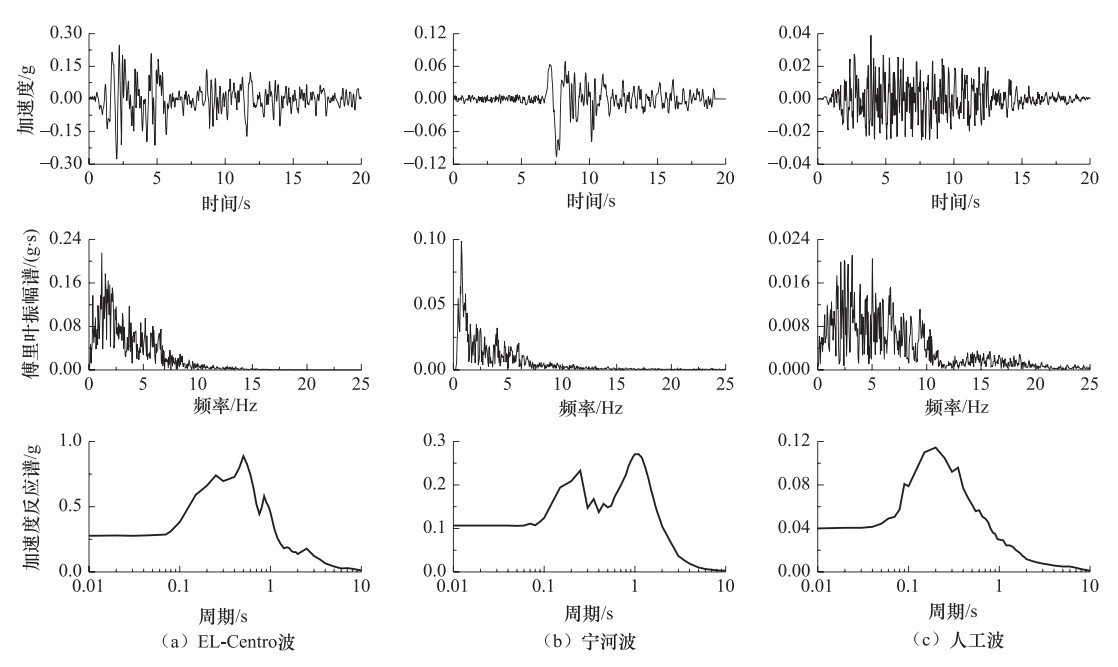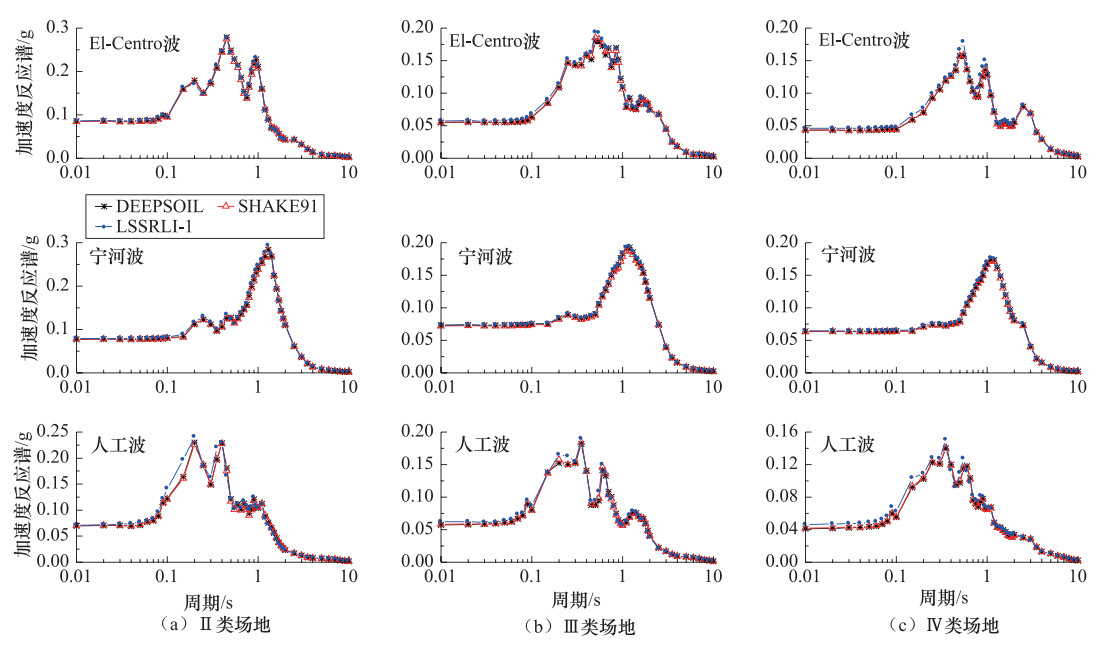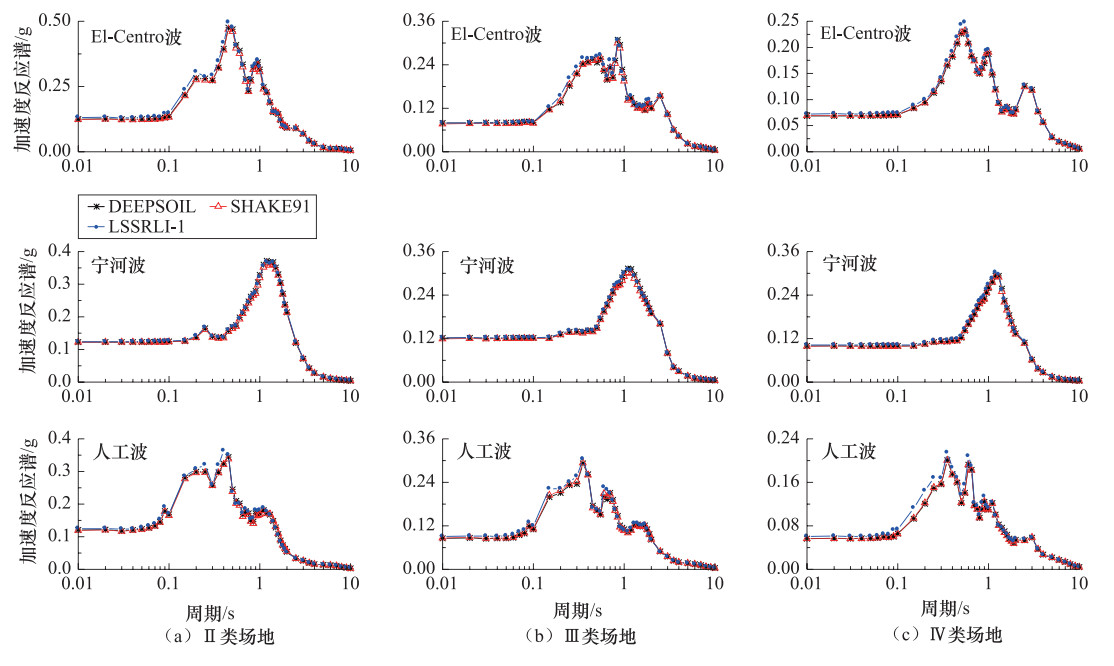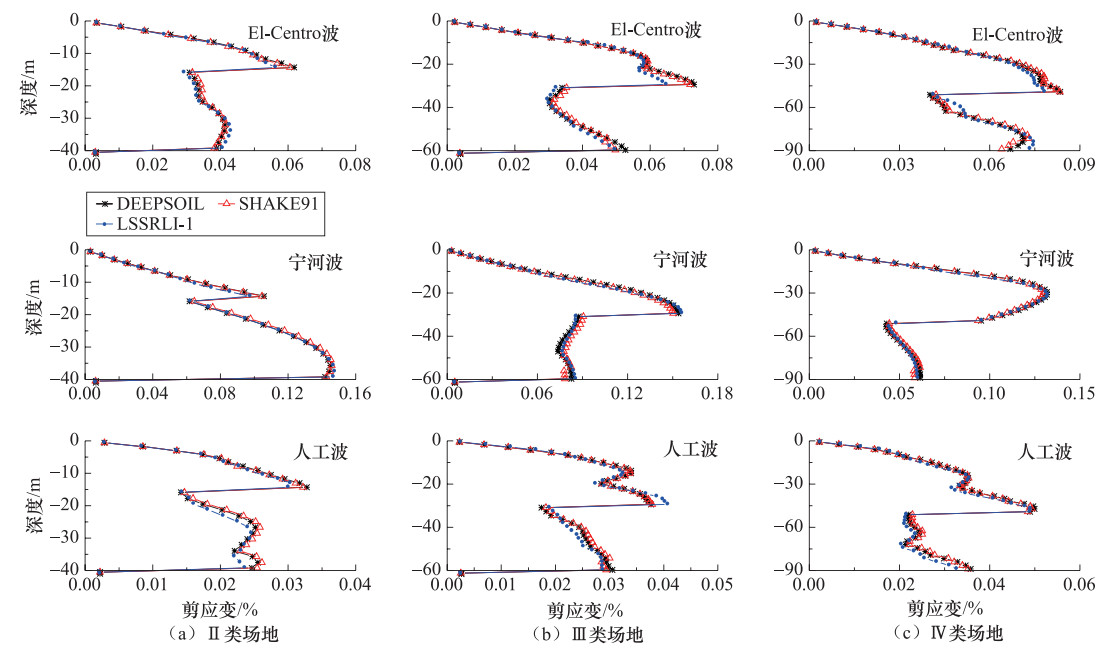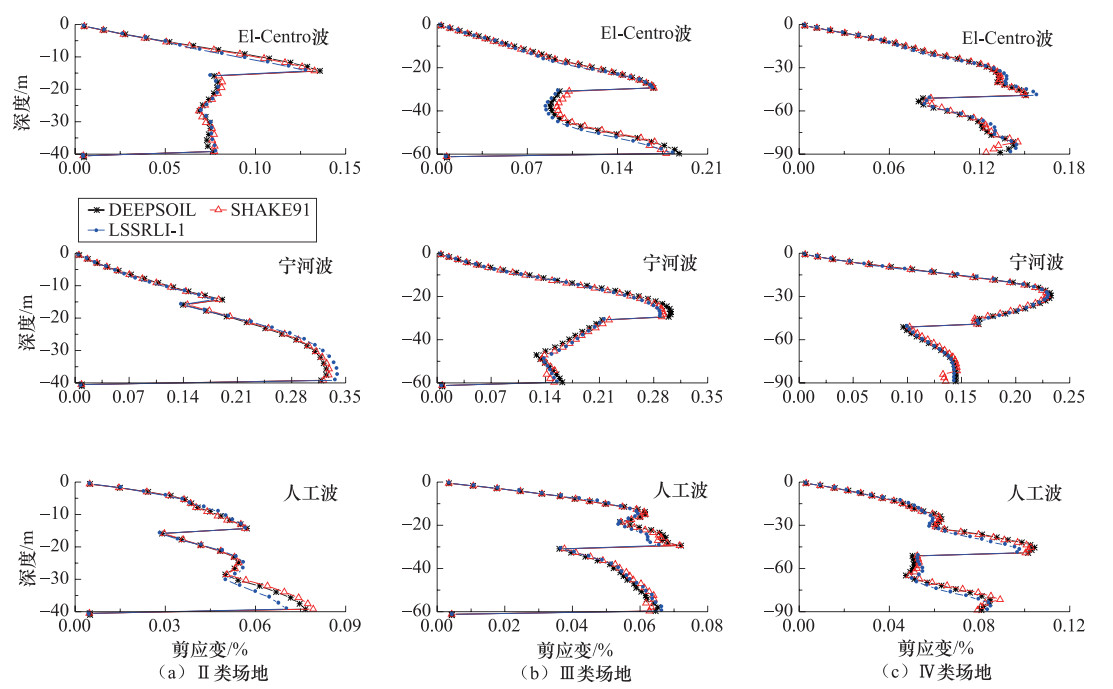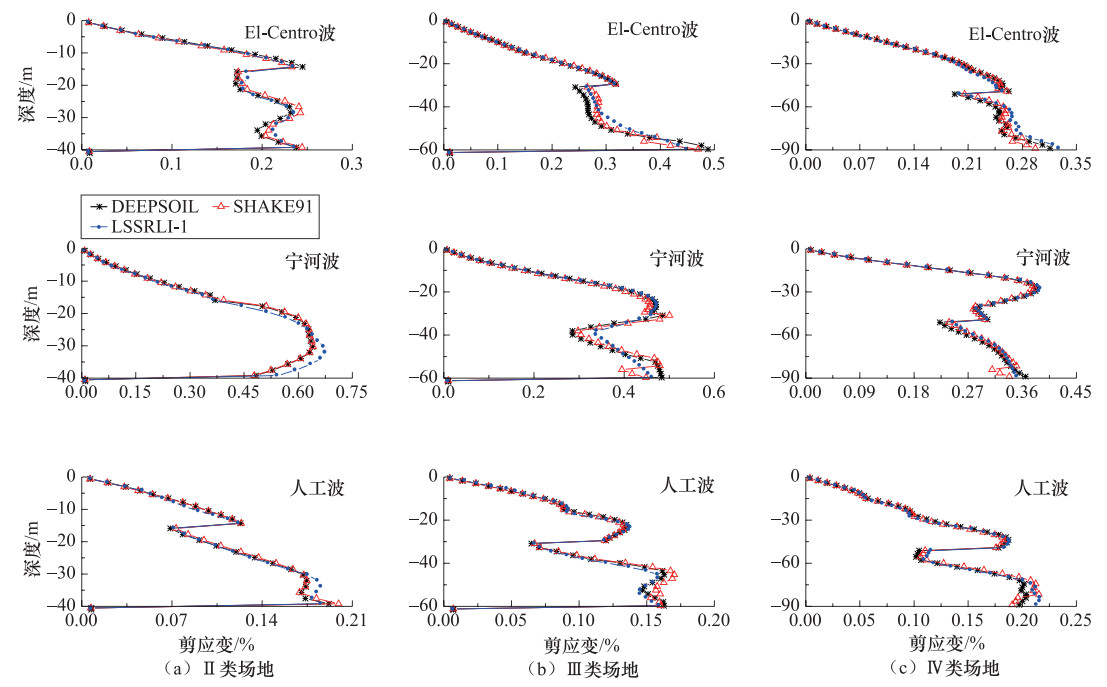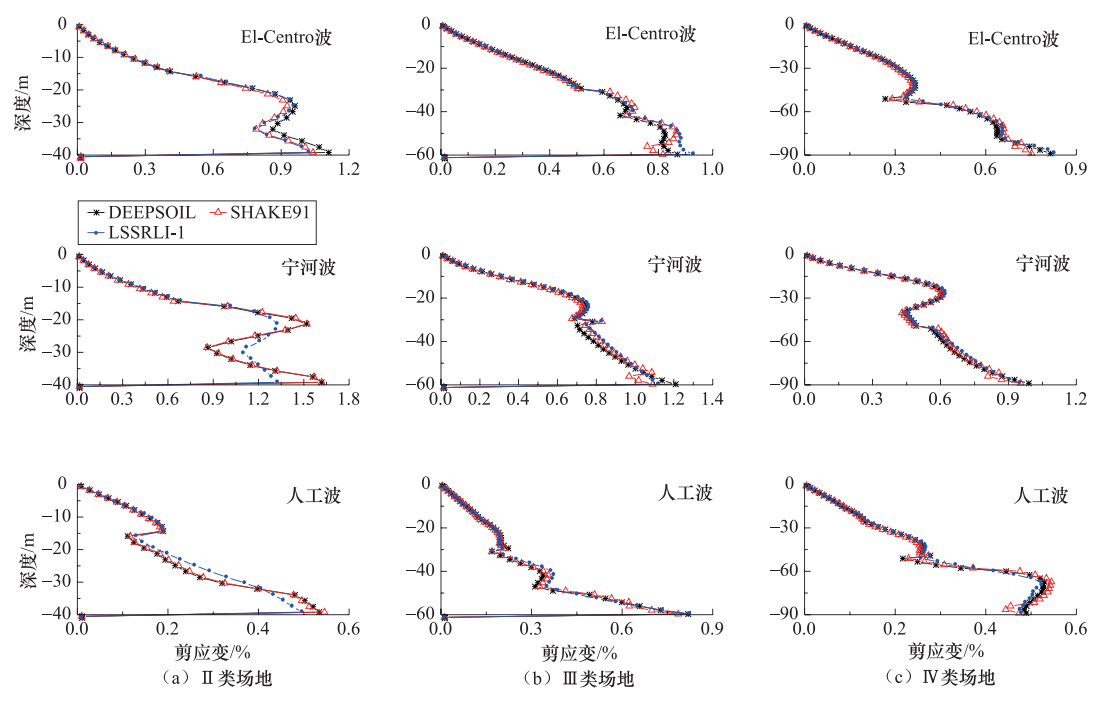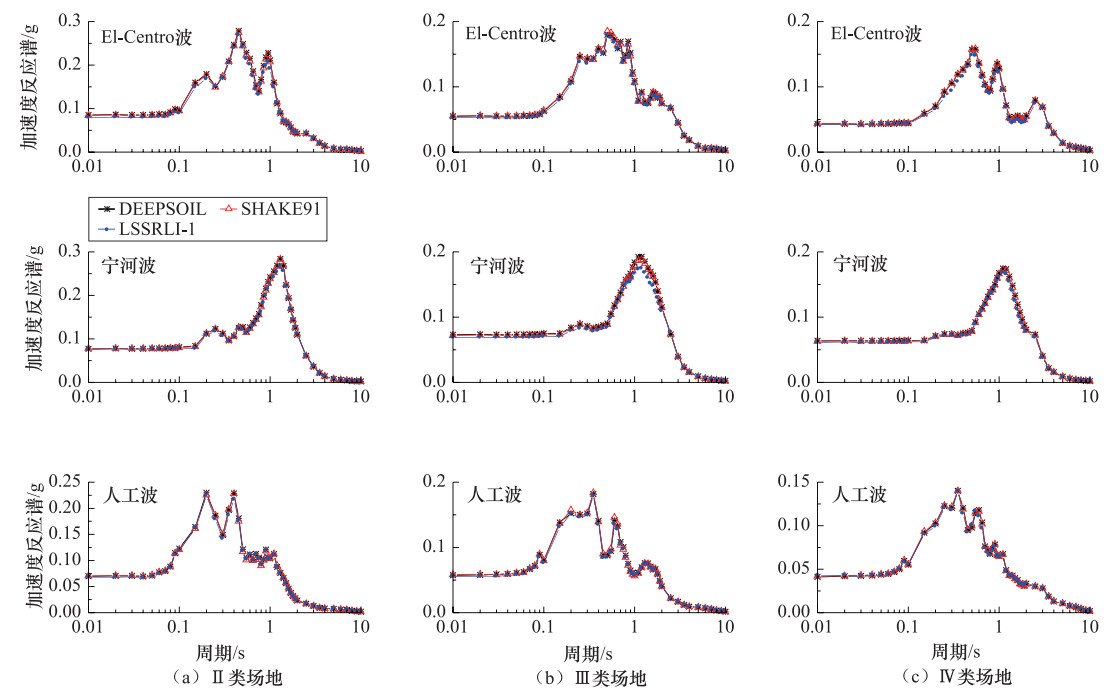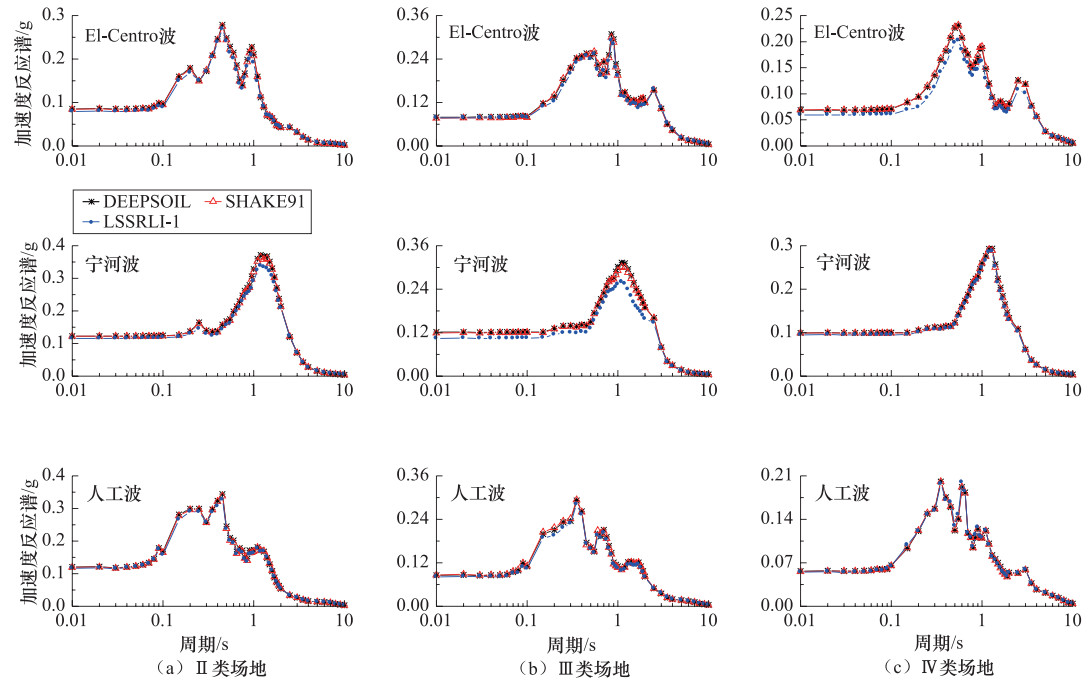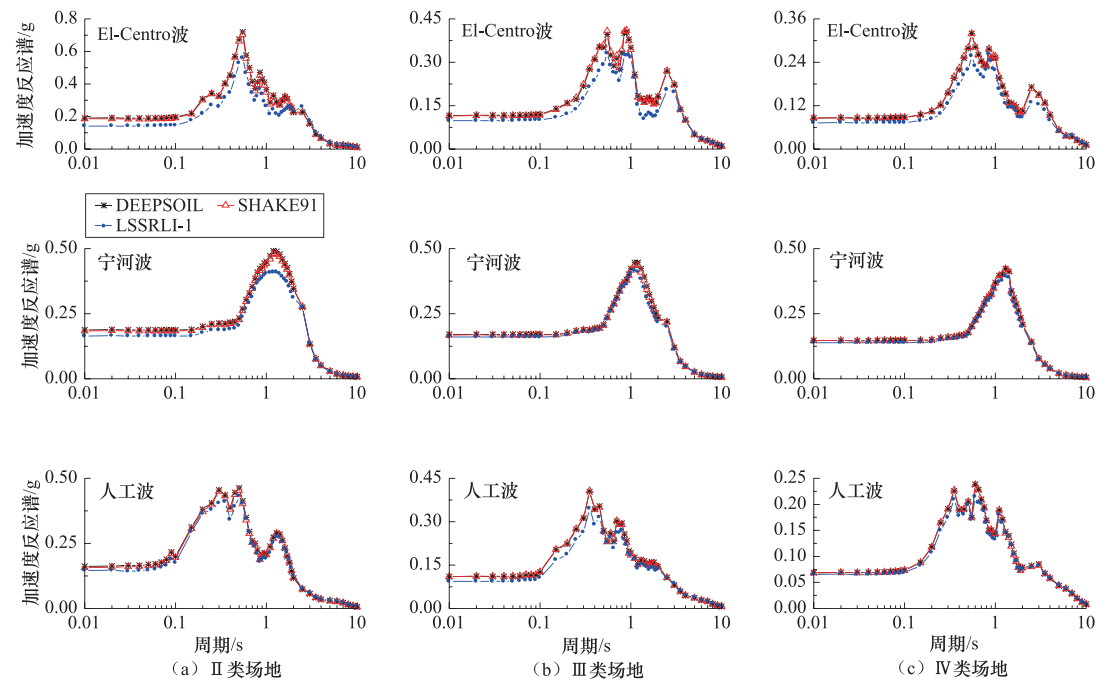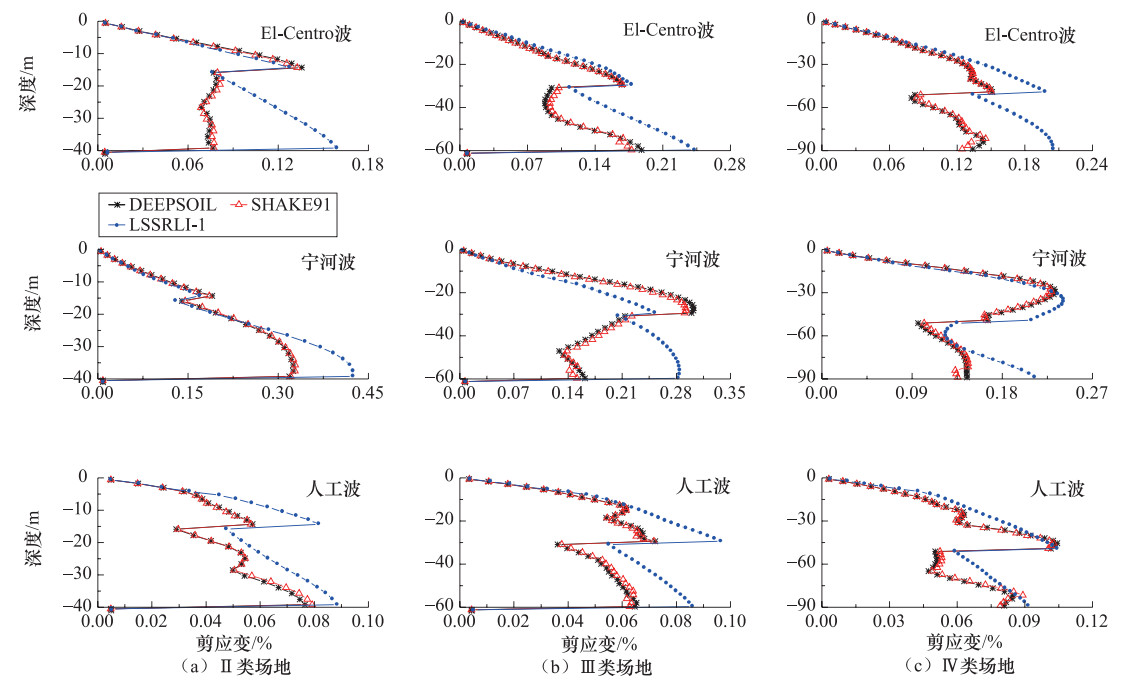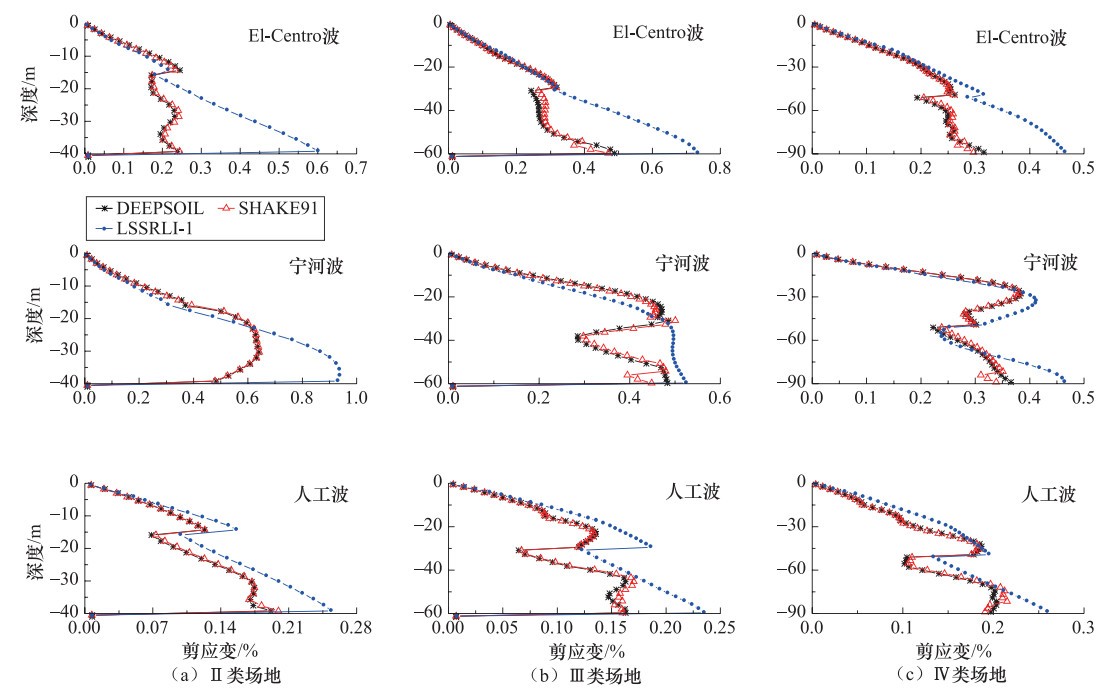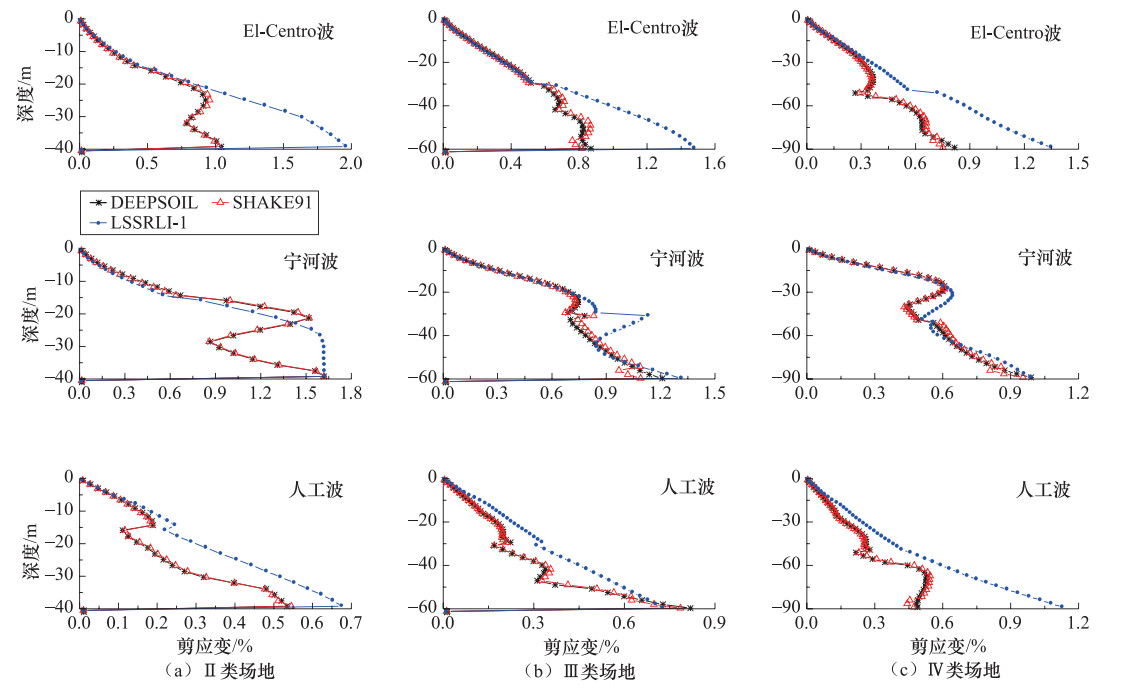Comparison of General Calculation Programs for One-dimensional Site Seismic Response Based on Equivalent Linearization Method
-
摘要: 基于等效线性化的一维土层地震反应计算是目前国内外普遍采用的方法,国外的SHAKE91、DEEPSOIL和我国的LSSRLI-1即是根据这一方法编制的通用计算程序。本文采用这3个程序进行了不同地震波、不同输入地震动幅值下不同场地类型的土层地震反应计算,并对三者的结果进行了全面的比较分析。结果表明:①SHAKE91和DEEPSOIL程序的计算结果完全相同;②当土层最大剪应变均采用时域计算时,LSSRLI-1程序的计算结果与SHAKE91和DEEPSOIL程序基本相同,但有微小差别,其原因是:在基于等效剪应变通过离散形式的剪切模量和阻尼比随等效剪应变变化的关系曲线确定等效剪切模量和阻尼比时,DEEPSOIL和SHAKE91采用的插值方法与LSSRLI-1不同;③当LSSRLI-1程序采用频域经验关系计算土层最大剪应变时,特别是在强地震动输入下得到的土层地表加速度峰值和加速度反应谱与另外两个程序的计算结果有差别,且土层最大剪应变随着输入加速度的增大出现较大的差别。因此,本文建议:当采用LSSRLI-1程序计算土层地震响应时,应使用程序中的时域解方法代替以往默认的频域经验关系方法。
-
关键词:
- 等效线性化 /
- 土层地震反应分析 /
- SHAKE91、DEEPSOIL和LSSRLI-1程序
Abstract: The method of one-dimensional site seismic response analysis based on equivalent linear analysis is widely used at home and abroad. For example, SHAKE91, DEEPSOIL and LSSRLI-1 are general calculation programs in abroad based on this method. In this paper, we compared and analyzed the results of site seismic response calculated by the three general calculation programs under different input earthquakes, different seismic amplitude values and different types of site layer. The results show that:① The SHAKE91 and DEEPSOIL basically produces the same results. ② When the maximum shear strain of layer is calculated in time domain, the calculation results of LSSRLI-1 are almost identical with those of SHAKE91 and DEEPSOIL, but with slight differences. The reason is that the interpolation method, based on the equivalent shear strain through the relationship of the discrete form of shear modulus and damping ratio with equivalent shear strain to determine the equivalent shear modulus and damping ratio, used in DEEPSOIL and SHAKE91 is different from that of LSSRLI-1. ③ When the frequency domain empirical relationship is used to calculate the maximum shear strain of soil in LSSRLI-1, under strong input ground motions, the calculation peak acceleration and ground acceleration response spectra of the soil are different from those of the other two programs, and the maximum shear strains of layers calculated by LSSRLI-1 and the other two programs are greatly different with the increase of input acceleration. Therefore, when soil seismic response analysis is performed using LSSRLI-1, we suggested that the method of time domain should be used instead of the method of the default frequency domain empirical relationship. -
表 1 土层计算模型参数
Table 1. The parameters of layer calculation model
场地类别 h1/m h2/m Ⅱ 15 25 Ⅲ 30 30 Ⅳ 50 40 表 2 土的G/Gmax-γ和ξ-γ关系
Table 2. The relationship between G/Gmax-γ and the relationship between ξ-γ
土类 γ/% 0.0001 0.0003 0.001 0.003 0.010 0.030 0.100 0.300 1.000 3.000 10.00 粘土 G/Gmax 1.000 1.000 1.000 0.981 0.941 0.847 0.656 0.438 0.238 0.144 0.110 ξ/% 0.240 0.420 0.800 1.400 2.800 5.100 9.800 15.50 21.00 25.00 28.00 砂粘土 G/Gmax 1.000 1.000 0.990 0.960 0.850 0.640 0.370 0.180 0.080 0.050 0.035 ξ/% 0.240 0.420 0.800 1.400 2.800 5.100 9.800 15.50 21.00 25.00 28.00 基岩 G/Gmax 1.000 1.000 1.000 1.000 1.000 1.000 1.000 1.000 1.000 1.000 1.000 ξ/% 0.000 0.000 0.000 0.000 0.000 0.000 0.000 0.000 0.000 0.000 0.000 表 3 Ⅱ类场地地表响应加速度峰值amax(单位:g)
Table 3. Computed peak ground acceleration of site class Ⅱ amax (unit: g)
地震波 El-Centro波 宁河波 人工波 输入加速度峰值/g 0.025 0.05 0.1 0.2 0.025 0.05 0.1 0.2 0.025 0.05 0.1 0.2 DEEPSOIL 0.085 0.125 0.190 0.214 0.076 0.123 0.187 0.256 0.069 0.119 0.159 0.204 SHAKE91 0.084 0.123 0.185 0.210 0.079 0.122 0.184 0.250 0.070 0.118 0.155 0.202 LSSRLI-1 0.085 0.130 0.191 0.218 0.079 0.124 0.186 0.302 0.071 0.123 0.171 0.211 δ/% 1.13 4.84 1.87 2.98 2.40 1.22 0.27 5.45 2.01 3.80 8.92 3.89 表 4 Ⅲ类场地地表响应加速度峰值amax(单位:g)
Table 4. Computed peak ground acceleration of site class Ⅲ amax (unit: g)
地震波 El-Centro波 宁河波 人工波 输入加速度峰值/g 0.025 0.05 0.1 0.2 0.025 0.05 0.1 0.2 0.025 0.05 0.1 0.2 DEEPSOIL 0.055 0.079 0.116 0.160 0.073 0.121 0.170 0.243 0.056 0.084 0.110 0.113 SHAKE91 0.055 0.077 0.115 0.158 0.072 0.119 0.168 0.242 0.057 0.086 0.110 0.114 LSSRLI-1 0.057 0.079 0.121 0.168 0.073 0.122 0.175 0.253 0.061 0.090 0.124 0.118 δ/% 3.83 1.28 4.76 5.73 0.76 1.67 3.55 4.42 8.06 5.88 12.73 4.29 表 5 Ⅳ类场地地表响应加速度峰值amax(单位:g)
Table 5. Computed peak ground acceleration of site class Ⅳ amax (unit: g)
地震波 El-Centro波 宁河波 人工波 输入加速度峰值/g 0.025 0.05 0.1 0.2 0.025 0.05 0.1 0.2 0.025 0.05 0.1 0.2 DEEPSOIL 0.043 0.068 0.085 0.110 0.063 0.099 0.146 0.199 0.041 0.056 0.069 0.078 SHAKE91 0.043 0.069 0.086 0.110 0.063 0.099 0.146 0.199 0.041 0.056 0.069 0.078 LSSRLI-1 0.046 0.072 0.089 0.114 0.064 0.102 0.151 0.210 0.045 0.060 0.072 0.082 δ/% 6.60 5.11 4.09 3.59 1.19 3.03 3.42 5.55 9.89 7.14 4.35 4.79 表 6 Ⅱ类场地地表响应加速度峰值amax(单位:g)
Table 6. Computed surface peak acceleration of site class Ⅱ amax (unit: g)
地震波 El-Centro波 宁河波 人工波 输入加速度峰值/g 0.025 0.05 0.1 0.2 0.025 0.05 0.1 0.2 0.025 0.05 0.1 0.2 DEEPSOIL 0.085 0.125 0.190 0.160 0.076 0.123 0.187 0.256 0.069 0.119 0.159 0.204 SHAKE91 0.084 0.123 0.185 0.158 0.079 0.122 0.184 0.250 0.070 0.118 0.155 0.202 LSSRLI-1 0.079 0.112 0.140 0.132 0.076 0.116 0.164 0.215 0.067 0.115 0.144 0.173 δ/% -6.25 -9.68 -25.33 -16.93 -1.36 -5.31 -11.59 -15.10 -3.74 -2.95 -8.28 -14.62 表 7 Ⅲ类场地地表响应加速度峰值amax(单位:g)
Table 7. Computed surface peak acceleration of site class Ⅲ amax (unit: g)
地震波 El-Centro波 宁河波 人工波 输入加速度峰值/g 0.025 0.05 0.1 0.2 0.025 0.05 0.1 0.2 0.025 0.05 0.1 0.2 DEEPSOIL 0.055 0.079 0.116 0.160 0.073 0.121 0.170 0.243 0.056 0.084 0.110 0.113 SHAKE91 0.055 0.077 0.115 0.158 0.072 0.119 0.168 0.242 0.057 0.086 0.110 0.114 LSSRLI-1 0.053 0.077 0.098 0.132 0.069 0.104 0.160 0.242 0.054 0.081 0.093 0.107 δ/% -4.19 -1.28 -15.15 -16.93 -5.18 -13.33 -5.33 -0.17 -3.81 -4.71 -15.45 -5.35 表 8 Ⅳ类场地地表响应加速度峰值amax(单位:g)
Table 8. Computed surface peak acceleration of site class Ⅳ amax (unit: g)
地震波 El-Centro波 宁河波 人工波 输入加速度峰值/g 0.025 0.05 0.1 0.2 0.025 0.05 0.1 0.2 0.025 0.05 0.1 0.2 DEEPSOIL 0.043 0.068 0.085 0.110 0.063 0.099 0.146 0.199 0.041 0.056 0.069 0.078 SHAKE91 0.043 0.069 0.086 0.110 0.063 0.099 0.146 0.199 0.041 0.056 0.069 0.078 LSSRLI-1 0.042 0.059 0.073 0.089 0.061 0.095 0.138 0.202 0.042 0.055 0.065 0.060 δ/% -2.20 -13.87 -14.62 -19.49 -3.40 -4.04 -5.48 1.68 1.59 -1.79 -5.80 -23.96 -
丁海平, 任琼洁, 于彦彦, 2014.基于竖向台阵地震记录的场地地震响应分析.地震工程与工程振动, 34(2):12-18. http://kns.cnki.net/KCMS/detail/detail.aspx?filename=dggc201402002&dbname=CJFD&dbcode=CJFQ 国家质量技术监督局, 2001. GB 18306-2001中国地震动参数区划图. 北京: 中国标准出版社. 李瑞山, 袁晓铭, 李程程, 2015.基于黏弹性解的土层地震反应分析程序LSSRLI-1和SHAKE2000的对比.地震工程与工程振动, 35(3):17-27. http://kns.cnki.net/KCMS/detail/detail.aspx?filename=dggc201503003&dbname=CJFD&dbcode=CJFQ 李小军, 1992.非线性土层地震反应分析的一种方法.华南地震, 12(4):1-8. http://kns.cnki.net/KCMS/detail/detail.aspx?filename=hndi199204000&dbname=CJFD&dbcode=CJFQ 李小军, 2013.地震动参数区划图场地条件影响调整.岩土工程学报, 35(S2):21-29. http://kns.cnki.net/KCMS/detail/detail.aspx?filename=ytgc2013s2005&dbname=CJFD&dbcode=CJFQ 廖振鹏, 1990.地震小区划-理论与实践.北京:地震出版社, 250-268. 廖振鹏, 2002.工程波动理论导论.2版.北京:科学出版社, 49-52. 刘德东, 齐文浩, 张宇东等, 2009.现行土层地震反应分析存在的问题.防灾科技学院学报, 11(3):34-37. http://kns.cnki.net/KCMS/detail/detail.aspx?filename=fzjs200903009&dbname=CJFD&dbcode=CJFQ 齐文浩, 薄景山, 刘德东等, 2005.强震记录对三个土层地震反应分析程序的检验.地震工程与工程振动, 25(5):30-33. http://kns.cnki.net/KCMS/detail/detail.aspx?filename=dggc200505004&dbname=CJFD&dbcode=CJFQ 中华人民共和国国家质量监督检验检疫总局, 中国国家标准化管理委员会, 2005. GB 17741-2005工程场地地震安全性评价. 北京: 中国标准出版社. 中华人民共和国国家质量监督检验检疫总局, 中国国家标准化管理委员会, 2016. GB 18306-2015中国地震动参数区划图. 北京: 中国标准出版社. 中华人民共和国住房和城乡建设部, 中华人民共和国国家质量监督检验检疫总局, 2016. GB 50011-2010建筑抗震设计规范. 北京: 中国建筑工业出版社. Schnabel P. B., Lysmer J., Seed H. B., 1972. SHAKE a computer program for earthquake response analysis of horizontally layered sites. Report No. UBC/EERC72-12. Berkeley, USA:Earthquake Research Center, University of California. -



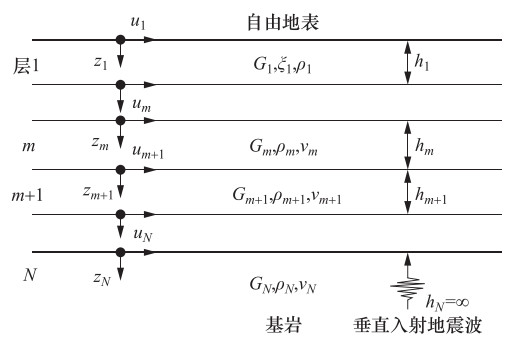
 下载:
下载:

